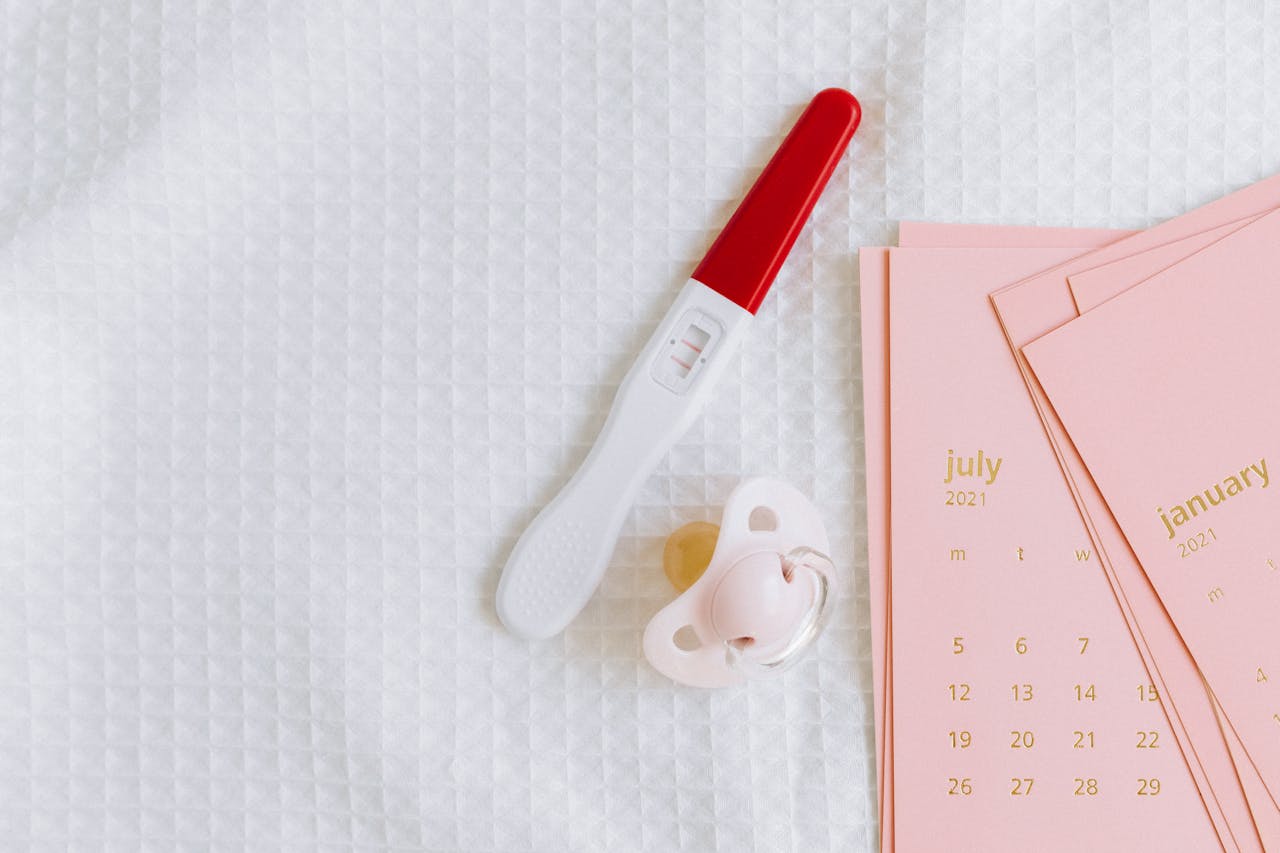9 Low progesterone symptoms and what to do about it
.jpg)
Progesterone is an important female sex hormone. Some of the low progesterone symptoms include difficulty getting pregnant and irregular menstruation.
Progesterone is one of the vital female sex hormones. Levels of this hormone may become low, causing low progesterone symptoms such as headaches, irregular menses, and difficulty in maintaining a pregnancy. The article describes the causes and signs of low progesterone, along with some of the natural ways to increase its levels.
{{button}}
What is the Function of Progesterone in the Body?
Progesterone plays a key role in the female reproductive system. It helps support menstruation and maintain the initial phase of pregnancy.
The main role of the progesterone hormone is to thicken the uterine lining and prepare for the implantation and growth of a fertilized egg if conception occurs. In case you get pregnant, the levels of progesterone increase further and support your pregnancy. However, if conception does not happen, the uterine lining sheds during menstruation.
Some of the functions of progesterone in the body are:
- Regulating the menstrual cycle
- Thickening the uterine lining for the implantation of a fertilized egg
- Regulating the flow of blood during menses
- Supporting the pregnancy if you get pregnant
- Improving mood
- Supporting the normal functioning of the thyroid gland
Low Progesterone Symptoms?
Progesterone is an important hormone during your childbearing years.
Some of the low progesterone symptoms in individuals without pregnancy include:
- Migraine headaches/headaches
- Irregularity of the menstrual cycle/missed periods
- Symptoms of mood changes, such as depression and anxiety
- Difficulty sleeping
- Abnormal bleeding from the uterus (womb)
- Hot flashes
- Weight gain, swelling, and bloating because of fluid retention are some of the signs of low progesterone
- Tenderness of breasts
- Difficulty conceiving/infertility
If you conceive, your body increases the production of progesterone as the latter is needed to maintain the pregnancy. High levels of progesterone during pregnancy prevent ovulation, subdue uterine contractions, and help prepare your breasts for breastfeeding.
Low progesterone symptoms during pregnancy include:
- Ectopic pregnancy
- Abdominal pain
- Low level of blood sugar
- Spotting or light bleeding
- Tenderness of breasts
- Fatigue
- Early labor
- Miscarriage
High Estrogen and Low Progesterone
Since progesterone and estrogen hormones work in conjunction to regulate menstrual cycles and fertility, low levels of progesterone may raise estrogen levels.
High levels of estrogen may cause:
- Weight gain
- Reduced libido or sex drive
- Gallbladder problems
- Heavy bleeding during period
- Depression
Low Progesterone Symptoms in Men
The requirement of progesterone in men is much less than in women. However, lower-than-normal levels of progesterone can still harm their bodies. Certain signs of low progesterone levels in men include:
- Anxiety, mood swings, or depression
- Loss of libido or reduced sex drive
- Fatigue
- Trouble concentrating
- Reduced muscle mass
- Erectile dysfunction
What are the Normal Progesterone Levels?
The levels of progesterone fluctuate throughout the menstrual cycle.
During the initial half of the menstrual cycle (the follicular phase), the levels of progesterone are low (< 2 ng/mL-nanograms per milliliter of blood).
At the time of ovulation, the levels of progesterone increase to about 12 ng/mL of blood. During the second phase of the menstrual cycle (the luteal phase), the progesterone levels peak, reaching their highest. The levels may reach up to 20 ng/mL of blood. If you do not conceive, the levels decline, and you get your periods.
If you get pregnant, the levels of progesterone continue to rise. The level can be 90 ng/mL of blood during your first trimester, rising to 300 ng/mL during the third trimester. During pregnancy, levels less than 5 ng/mL are regarded as abnormal.
The levels of progesterone decline with age and as you enter menopause. The levels may become as low as 0.5 ng/mL of blood in postmenopausal women.
Generally, progesterone level is checked by a serum blood test done by your healthcare provider.
What Causes Low Progesterone?
Some of the most prevalent causes of low progesterone include:
Hormonal Factors
Polycystic ovary syndrome (PCOS)
One of the causes of low progesterone in the 30s is PCOS or polycystic ovary syndrome. PCOS is a common disorder affecting women during their childbearing years.
It involves a hormonal imbalance along with high levels of androgen (male) hormone and the development of fluid-filled cysts in the ovaries. The symptoms include irregular periods, missed periods, acne, hirsutism (excess growth of body and facial hair), difficulty conceiving, and weight gain.
Hyperprolactinemia
This condition is characterized by the excess production of the hormone prolactin (lactation hormone) by the pituitary gland in the body. Elevated levels of prolactin can disrupt the production of other sex hormones, including progesterone. The latter can result in low progesterone symptoms such as loss of period or irregular menstrual cycles.
Hypothyroidism
In this condition, the thyroid gland is underactive or slow. This, in turn, makes it difficult for the body to produce progesterone.
Perimenopause
When you reach menopause, the levels of progesterone decline naturally, causing low progesterone symptoms such as irregular cycles, difficulty getting pregnant, etc.
Lifestyle Factors
High-Stress Levels
Cortisol, the stress hormone, can increase due to high stress levels. Excess cortisol can disrupt the production of progesterone, causing low progesterone symptoms.
Low cholesterol
The body requires cholesterol to produce progesterone. So, low levels of cholesterol may reduce the production of progesterone.
Poor Nutrition
Insufficient consumption of essential nutrients in the diet, such as healthy fats, may impair the body’s capacity to synthesize hormones such as progesterone, causing low progesterone symptoms.
Extreme Dieting/Over-Exercising
Both conditions put additional stress on the body, elevating cortisol levels. Furthermore, the body is deprived of essential nutrients, which interferes with hormonal balance.
Other Factors
Anovulation
There is no ovulation (there is no release of an egg from the ovary during the menstrual cycle).
Certain Medicines
What causes low progesterone? Low progesterone may occur as a side effect of taking certain medicines such as antiprogestins.
Environmental Factors
Certain environmental factors, such as exposure to compounds that disrupt hormonal balance, can also result in low levels of progesterone. Some of these compounds (known as endocrine disruptors) are present in pesticides, personal care items, and plastics.
Obesity
Obesity is one of the causes of low progesterone in the 30s, as the excess weight may result in a hormonal imbalance.
Treatment of Low Progesterone
How to raise progesterone levels? Various treatments are available to raise progesterone levels and to treat low progesterone symptoms. Your healthcare provider will help you recommend the best treatment option based on your signs and the treatment goals.
Some of the treatment modalities are:
Progesterone gel or creams
To be used vaginally or topically.
Vaginal suppositories
How to increase progesterone to get pregnant? Vaginal suppositories are inserted into the vagina and are generally utilized to treat low levels of progesterone that cause fertility issues.
Oral Pills
Progesterone pills can be utilized for managing an irregular menstrual cycle and bleeding from the uterus.
Injections
How to increase progesterone to get pregnant? A shot of progesterone (injection into the skin) may be given to maintain the thickness of the endometrial lining during pregnancy.
When to Avoid Hormone Therapy?
Your healthcare physician may not recommend hormone therapy if there is a personal history of:
- Endometrial cancer
- Breast cancer
- Blood clots
- Liver disease
- Stroke
How to Naturally Increase Progesterone?
You can increase your progesterone levels naturally by making a wide variety of lifestyle and dietary changes.
Dietary Strategies
Include foods rich in vitamin B6, zinc, magnesium, and vitamin C in your diet to maintain healthy levels of progesterone.
- Zinc: It is present in shellfish, oysters, pumpkin seeds, and various other seeds and nuts.
- Vitamin B6: Found in spinach, potatoes, and bananas.
- Magnesium: Dark chocolate, leafy greens, seeds, and nuts are rich sources of magnesium.
- Healthy Fats: Healthy fats are abundantly present in seeds, olive oil, almonds, and avocados.
- Vitamin C: This vitamin is present in oranges, yellow peppers, kiwi, and broccoli.
Lifestyle Strategies
- Manage your stress levels. How to treat low progesterone naturally? Manage stress levels by practicing various stress-reducing techniques such as meditation, yoga, deep breathing exercises, listening to music, or spending more time in nature.
- Lose weight if you are overweight or obese, and maintain it by following healthy dietary habits and regular exercise.
- Get adequate sleep at night. Poor sleep may disrupt the production of hormones. Aim for at least seven to eight hours of good quality sleep at night. Inculcate healthy sleep hygiene practices.
- Exercise regularly. Doing regular moderate exercise supports a healthy hormonal balance. However, avoid over exercising as it may disrupt hormone production.
When Should You Consult Your Healthcare Provider?
See your physician if you develop the following low progesterone symptoms:
- Migraine headaches/Headaches
- An irregularity of the menstrual cycle
- Anxiety, depression, or other symptoms of mood change
- Bleeding from the vagina between periods
Conclusion
Progesterone is one of the vital female sex hormones. It helps in regulating the menstrual cycles and maintaining pregnancy. Some of the low progesterone symptoms include irregular periods, spotting or light bleeding, headaches, and difficulty getting pregnant. If you develop any of these signs of low progesterone consult your healthcare provider.
There is a wide variety of treatments available to raise progesterone levels, including progesterone gels, creams, suppositories, oral pills, and injections. You can also use lifestyle and dietary strategies to increase your progesterone levels.
{{pink-banner}}








.avif)
